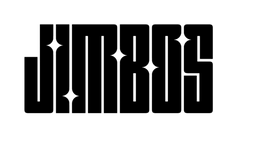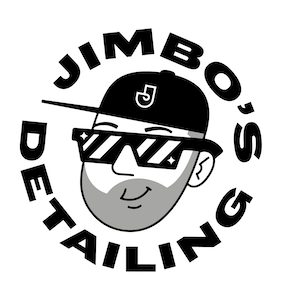Black Friday Microfiber Towel Deals – What’s Worth It
Towels sell out fast every Black Friday because they’re the backbone of safe detailing. But grabbing the wrong stack—rough edges, low pile, or cheap blends—can introduce swirls you’ll chase for months. This guide cuts the hype so you can choose the right GSM, pile height, edge type, and weave for every job, then build a lean kit that keeps your paint safe and your results pro.
Jimbo’s Picks: The Safe, Minimal Towel Stack
- Contact Wash: Orange Wash Microfiber Towel (ultra‑soft, high‑pile)
- Drying: Massive Drying Towel (huge capacity, low‑marring)
- Leveling / Buffing: Everyday Microfiber Towels (edgeless, coatings/interiors)
Amazon options available here if you prefer to shop on Amazon: Jimbo’s Amazon Storefront.
What Actually Matters in a Microfiber Towel
- GSM (grams per square meter): Higher GSM towels (500–600+) are typically plusher and gentler for paint. Mid‑GSM (300–400) is versatile for interiors, glass, and leveling. Ultra‑high GSM can be too mushy for some tasks—balance is key.
- Pile Height: High‑pile towels trap grit above the paint during contact wash and rinse wipe downs. Low‑pile is great for glass, coatings leveling, and residue removal.
- Edge Construction: Edgeless or micro‑suede edges are safest. Stitched edges can be fine if soft and well‑finished, but avoid hard bindings that scratch.
- Blend: 70/30 (polyester/polyamide) is the classic “premium” blend for softness and water absorption. Some modern 80/20 blends can still perform if the fiber and finishing are high quality.
- Weave Type: Plush for paint contact, twist loop or hybrid for drying efficiency, tight low‑pile for glass and coating leveling. Waffle weaves are old‑school for drying—modern towels usually beat them for safety and capacity.
- Colorfastness & Linting: Quality dye systems won’t bleed; better fiber controls lint. Cheap bulk towels often shed and streak.
Build a Lean, Pro‑Grade Kit (No Filler)
You don’t need a closet full of towels—just the right roles covered. Here’s a proven, no‑nonsense stack:
- Contact Washing: Use a dedicated, ultra‑soft wash towel. The Orange Wash Microfiber Towel pairs perfectly with high‑lubricity soap for minimal marring.
- Drying: A single giant towel beats a handful of small ones. The Massive Drying Towel lets you lay and pull with almost no pressure.
- Leveling / Buffing: Keep several edgeless, low‑pile towels ready for coatings and sprays. Everyday Microfiber is the go‑to for safe leveling and interior wipe downs.
- Interior Scrubbing (Non‑Paint): For textured plastics, vinyl, and rubber, use Scrub Buddy Pad 3‑Pack (not for exterior paint).
Contact Wash Safety: Towels vs. Mitts
Old‑school lambswool and sponges are risky. Modern high‑pile microfiber wash towels lift dirt into the fiber forest and away from paint. Combined with a slick, coating‑safe soap, you get fewer swirls and faster washes. For the wash media itself, softness and pile height matter more than tradition.
Cost‑Per‑Use: The Only Way to Compare “Deals”
Ignore the sticker price and calculate cost‑per‑use. A $8 towel that safely lasts 80 uses costs $0.10 per job, while a cheap $3 towel that mars paint on day one costs you time and correction work.
Cost‑Per‑Use Formula
(Price ÷ Estimated Safe Uses) = Your Cost Per Job
How Many Towels Do You Actually Need?
- Wash Media: 2–4 high‑pile wash towels (rotate clean sides as you go).
- Drying: 1–2 Massive Drying Towels (backup for SUVs/trucks or humid days).
- Leveling / Buffing: 6–10 Everyday Microfiber (coatings, spray sealants, interior, glass).
- Interior / Wheels (Non‑Paint): 4–8 older towels demoted from paint duty.
Care & Washing: Make Your Towels Last
- Sort by Task: Keep paint towels separate from wheels/interior towels.
- Use a Microfiber‑Safe Detergent: No fabric softeners or dryer sheets—they kill absorbency.
- Warm Water, Extra Rinse: Helps purge soaps and silica residues from ceramic sprays.
- Low Heat Dry: High heat can melt fibers; air‑fluff is safest.
- Retire on Time: If a towel gets contaminated or rough, demote it from paint duty.
Deep dive: How to Properly Wash Microfiber Towels.
When Waffle Weave Still Makes Sense
Modern drying towels have largely replaced waffle weaves thanks to higher capacity and gentler contact. That said, waffle weave can still work for glass or as a secondary dryer in low‑risk areas. For paint, choose plush or twist‑loop designs that glide with minimal friction.
Real‑World Use Cases (Pick by Task)
- Foam‑First, Semi‑Touchless Wash: Pair a slick soap with the Orange Wash Microfiber Towel for the single contact pass.
- Quick Dry with Minimal Touch: Flood rinse, then lay the Massive Drying Towel and drag gently.
- Ceramic Leveling & Maintenance: Work panel‑by‑panel with fresh sides of Everyday Microfiber.
- Interior Deep Clean: Pair Scrub Buddy Pads with Complete Cabin Cleaner.
Pro Tip: Buy once, label your towels (Paint / Interior / Wheels), and protect the investment by washing them right.
Start with the essentials: Everyday Microfiber, Massive Drying Towel, and Orange Wash Microfiber Towel.
Avoid These “Deal” Traps
- Bulk Bargains with Hard Edges: If the binding feels rough, skip it—cheap edges cause micro‑marring.
- Ultra‑Cheap “Glass Towels” on Paint: Tight low‑pile can drag if used for the wrong task.
- Unknown Dyes and Bleed Risk: Bright colors that bleed can stain trim and interiors.
- One‑Towel‑Does‑Everything Bundles: Task‑specific towels are safer and more efficient.
Helpful Guides to Pair With Your Towel Buy
- Best Black Friday Car Detailing Deals – What to Buy First
- Black Friday Car Wash Soap Deals – Don’t Miss Out
- Black Friday Ceramic Coating Deals – Save on Long‑Term Protection
- How to Properly Wash Microfiber Towels
- The End of the Two‑Bucket Wash Method
Summary: Buy towels by task, not by hype. High‑pile for washing, twist/plush for drying, low‑pile for leveling and glass, edgeless whenever possible. Start with three essentials—the Orange Wash Microfiber Towel, Massive Drying Towel, and Everyday Microfiber—then add specialized pieces as needed. Care for them right and they’ll pay you back with safer, faster details all year.
FAQs
Do I really need separate towels for paint, interior, and wheels?
Yes. Cross‑contamination is real. Keep paint towels pristine and demote older ones to less sensitive tasks over time.
What GSM is best for drying?
There’s no single magic GSM—capacity and weave matter more. A high‑capacity twist‑loop or hybrid towel like the Massive Drying Towel is ideal for low‑pressure drying.
Are edgeless towels always better?
For paint, edgeless is safest. For glass/interiors, a soft trimmed edge can be fine. Inspect edges with your fingertips—if it feels scratchy, skip it.
Why does my towel lint?
Cheap fiber, bad finishing, or high‑heat drying can cause lint. Buy quality towels and dry on low heat with no softeners.
How often should I replace paint‑safe towels?
When you feel grabby fibers, embedded debris, or see permanent staining, demote the towel to non‑paint duty.
Product availability and pricing often change during Black Friday. Confirm current options at checkout.



